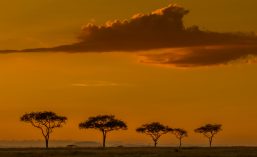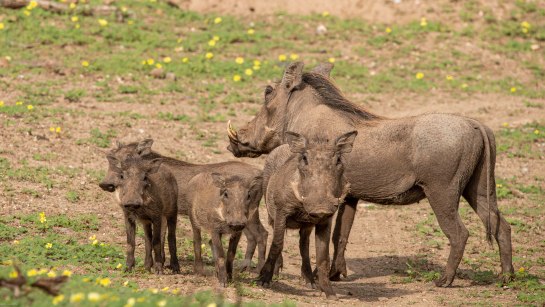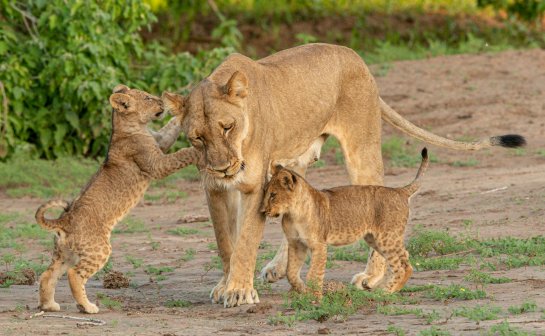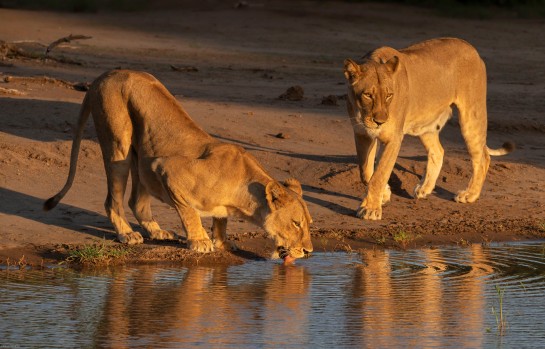Mashatu game reserve has a northern western annex. This northern part is along the Motloutse river. It includes the Motloutse lookout, Soloman’s wall and Mmamawaga hill where the remains of the Motloutse ruins can be seen.
“We rush through our days in such stress and intensity, as if we were here to stay and the serious project of the world depended on us. We worry and grow anxious; we magnify trivia until they become important enough to control our lives. Yet all the time, we have forgotten that we are but temporary sojourners on the surface of a strange planet spinning slowly in the infinite night of the cosmos.” ~ John O’Donohue
The Motloutse ruins are situated on top of Mmamagwa hill. There is virtually nothing left of the ruins except a few artifacts scattered in the sand and in crevices. On top of this hill a lone baobab stands like a sentinel looking down from its sandstone footing onto the mopanis and thornveld below .

About two or three kilometres directly north west of Mmamawga hill is Soloman’s wall which is positioned across the Motloutse river. It is a 30 metre wide and 20 m high (above the river bed) vertical basalt dyke. It formed a natural dam wall across the Motloutse river which eventually, through erosion, was breached.
A closer view of the right hand side of the eroded Soloman’s wall as you look down the Motloutse river toward the Limpopo river which flows down to the sea through Mozambique. It is hard to believe but this river can flow bank to bank after good rains which adds significantly to the Limpopo river’s flow.

A closer view of the right hand buttress as you look west. Looking at the size of this natural wall and the flatness of the upriver area, it must have created an impressive dam in days of old which stretched back beyond the Motloutse outlook many kilometres to the north.

“Each of us carries a unique world within our hearts.” ~ John O’Donohue
A view looking back from a ridge next to Soloman’s wall along the road that will take you back to Pont Drift border post on the southern edge of Mashatu. In the distance, on the left hand side of the next image, is a sacred hill which you will pass on the way the Motloutse lookout point. Only the Paramount Chief is allowed on top of this hill. Legend has it that whoever goes up there (other than the Chief) will not come back.

The sandstone hill upon which the sentinel baobab grows was part of the larger Mapungubwe region. The first people in Mapungubwe were early Iron Age settlers who lived there from about 1000 AD to 1300 AD. According to historicans, Mapungubwe was the first state in Southern Africa in the period 1220 to 1300AD. The Kingdom of Mapungubwe which existed in the Limpopo – Shashe basin, one thousand years ago, appears to have been the centre of the largest known kingdom in the African sub-continent. The civilisation thrived as a sophisticated trading center. There is a trail, 1000 years old, linking Vilanculos on the coast of Mozambique with the home of the little golden rhino, Mapungubwe. Artifacts found along the trail suggest the people who lived along this route transacted in gold, iron, ivory, ceramics, cloth and glass beads – from as far away as Arabia, India and China. Gold findings were evidence of early gold smelting. A large amount of artifacts from the royal family were discovered at Mapungubwe in South Africa. The best known of these objects is the golden rhinoceros. The Mouloutse ruins are thought to be the remains of satellite city of the main Mapungubwe city.

“May you experience each day as a sacred gift woven around the heart of wonder.” ~ John O’Donohue
I have never seen animals on Mmamawaga hill but have seen elephants, impala, zebra, baboon and hyena down in the valley at the foot of Mmamagwa, where there is a natural spring. There are droppings of klipspringer and even elephants on top of Mmamawaga, signalling their erstwhile presence. In the rainy season, the water collects between the rocks providing ample water and rich pickings for those animals who dare to venture onto this hill’s crest.

Rhodes baobab, a lone baobab tree which must have had the top part of its trunk broken off when it was much younger. Perhaps there was an exceptionally high wind on top of the hill which did the damage. It is difficult to judge the age of this baobab and it is generally difficult to tell the age of a baobab tree. The reason being that they have a succulent trunk which gets stripped by elephants for water and does not have any clear growth rings, and some of the bigger ones are hollow. These are revered trees which alongside the lion and elephant and are iconic symbols of ancient Africa. Rhodes baobab is thought to be around 1000 years old Its girth is about 20 metres. It is difficult to know how this baobab seeded itself high on this sandstone ridge so many centuries ago. It might have been a bird or even a dung beetle removing its dung ball from elephant’s droppings and rolling it away and burying it in the sandy section where it stands today.

“Many of us have made our world so familiar that we do not see it anymore. An interesting question to ask yourself at night is, What did I really see this day?”~ John O’Donohue
While looking across the ‘Land of the Giants’ from the towering vantage point on Mmamagwa hill, you can see a series of parallel sandstone ridges which stretch from inside the Mapungubwe National Park in South Africa north along the Motloutse river.

While we were having sundowners, we had several visitors. When the sun was up we were visited by common flat lizards and skinks. As it got a little darker, an elephant shrew came out but it was too dark to get decent images of this fleet-footed mouse-like creature. The Elephant shrew is one of Africa’s “little five” (other four are Ant lions, Leopard tortoises, Buffalo weavers and Rhino beetles).
I did manage to get a few images of this Common Flat lizard which is easily identified by its dark green back with light green spots, bluish belly and rust to yellow coloured tail. It is endemic to this area and frequents these rocky outcrops normally feeding on invertebrates but will readily eat the crumbs dropped from our sunset drink snacks. The Flat lizard family are specialised to live on these types of rock outcrops. This group is so-called because of their flattened body shape which helps them fits into crevices in the rocks.
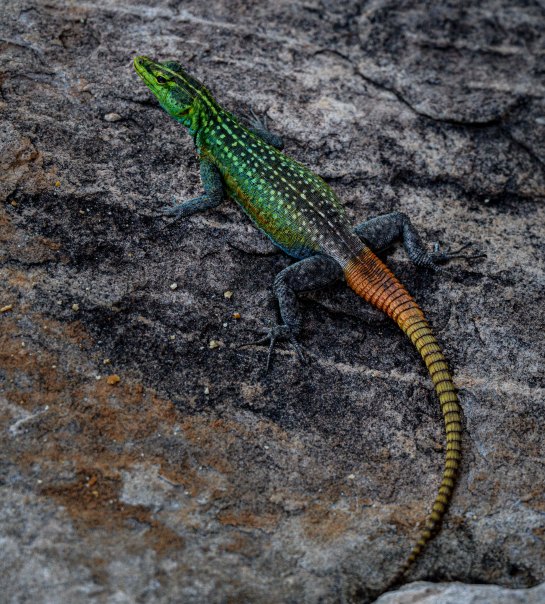
“As I sit under your bough, I am reminded of ‘Grandmother Willow’ and my musings paint with all the colours of the wind. I listen to the singing sandstone cliffs and wonder if I will hear the wolf cry to the blue corn moon.” ~ Mike Haworth with memories of Pocahontas.
Some of the oldest baobabs are estimated to be over a thousand years old. The oldest baobab is thought to be Panke, a sacred giant in Zimbabwe, which is estimated to be between 2 450 and 2 500 years old. Baobabs are called the pachycauls of Africa. These are plants with a disproportionately thick trunk for their height and have relatively few branches. Baobabs are affectionately called the “upside down tree” because when bare of leaves, the spreading branches of a baobab look like its roots sticking up in the air. Africa is home to two of the nine species of baobab. Interestingly, these trees bloom at night and are pollinated by several species of fruit bats. The flowers are large enough to support the bats while they lick up the nectar and do their cross fertilisation work.
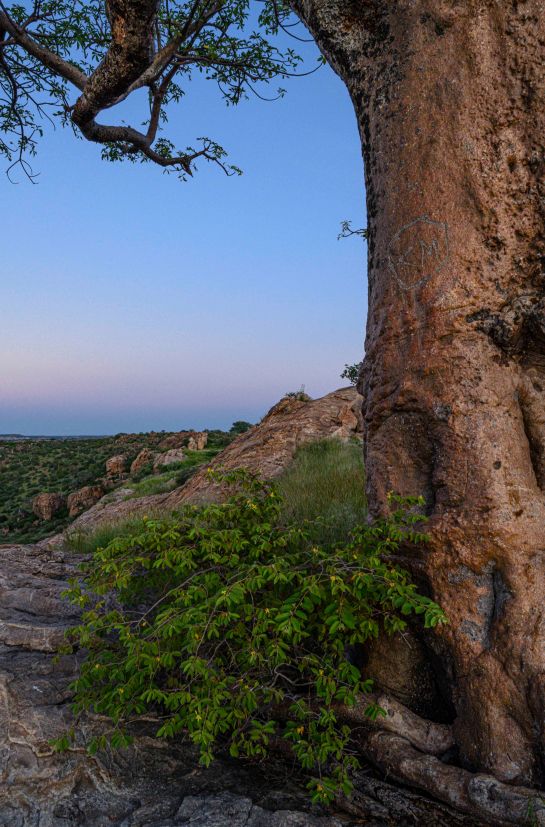
“The dogmas of the quiet past are inadequate to the stormy present. The occasion is piled high with difficulty, and we must rise with the occasion. As our case is new, so we must think anew and act anew.”~Abraham Lincoln
On the west side of the trunk of Rhodes baobab, about 1.5 metres off the ground, you can faintly see the initials CJR and ADS carved into the bark. The tree has, over the millennia, thankfully healed and mostly covered up Rhodes’s desecration. CJR are the initials of Cecil John Rhodes and ADS is Antonio de Silva, who was Rhodes’ secretary. The history books show that Rhodes was in the region around 1893 surveying a route for his proposed railway line from Cape Town. Cecil John Rhodes had a dream of building a railway line from the Cape to Cairo. It transpired that the terrain was not suitable and the railway was built from Kimberley to Mahikeng in South Africa and on to Gaborone and Francistown in Botswana and on further north to Bulawayo in Zimbabwe.

“History will have to record that the greatest tragedy of this period of social transition was not the strident clamour of the bad people, but the appalling silence of the good people.” ~ Martin Luther King, Jr.
There is a mystical quietness on top of Mmamagwa. You sense it as soon as you stand on top of the rocks near its sentinel baobab. The enormous vista enables you to see far and wide. One of our favourite times of the day to visit this magical place is in the late afternoon so that we can watch the sunset from its impressive sandstone ridge. I have said it before, but one gets a sense of reverence on top of Mmamagwa hill. I am not sure whether it comes from the quietness and perspective you get from looking down from such a height or whether there is a lingering sense of many souls who have lived here in another time and in another civilisation.

Once we hear the baboons barking in the gloom and hyaenas starting to whoop, we know it is time to descend and come back to earth. It is a tricky descent in the semi-light because you have to clamber over rocks and the bottom section is littered with loose stones.
“I gaze down upon your vastness and beauty with serenity. The quietness has a spiritual quality. The faint breeze carries voices from across the millennia. It is a place that humans can visit but could never call their own. History echos around this wild place.” ~ Mike Haworth
Explore, seek to understand, marvel at its inter-connectedness and let it be.
Have fun, Mike
